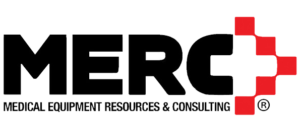CAPITAL STRATEGY INSIGHTS: Reimagining the Process #017

July 27, 2023
#017 Buying Capital Equipment Should Not Be Reactive
We looked at using Estimated Remaining Useful Life metrics to decide if an asset should be redeployed in my last post. Using ERUL metrics in combination with the costs to redeploy allows reuse decisions to be based on data and take much of the guess work or opinions out of the decision. I’d like to get back to a topic I am passionate about, and that is planned capital purchasing. We’re going to approach it from the negative – what happens when purchasing is reactive. There are three main levers to achieve value in purchasing: timing, competition, and aggregation. All three of those levers break in a fully reactive purchase.
The XYZ Unit breaks down and it’s really important to your operations. You have to outsource whatever XYZ does, therapeutic, diagnostic, or operational support. What was done in house is now either farmed- out, postponed, rented, or borrowed. This adds costs due to work arounds, slows down results or turnaround times, and/or incurs revenue loss.
To stop the bleeding, a new XYZ is requested. Rush job – must expedite. Being down is costing us thousands a day plus impacting patient and clinician satisfaction. The person who knows this as well as you do is the salesperson for the XYZ unit. Sure, you have a GPO agreement with the manufacturer, or some contracted relationship, but this is a reactive buy. You have lost your leverage.
Timing goes from planned replacement, when your budget, funding, and selected timing for negotiations and purchasing are aligned to facilitating urgent replacement. Generally, you want to time the purchase when the vendor is most anxious to make the sale – they have numbers/quotas to hit. That’s no longer possible.
Competition is also out the door – you are buying the XYZ Unit and everyone knows it. Reminds me of the time I was with a client and the clinical department head walked in and told the purchasing leadership that they had just informed a specific vendor that they were going to purchase the big ticket asset from them. I doubt the vendor had much incentive to improve the offer in any way, costing that facility thousands of dollars.
It takes planning to achieve aggregation. There are multiple ways to increase the stakes of the transaction by adding volume, but those tactics are not available on reactive purchases. More volume to a vendor should yield deeper savings, because among other things you are lowering their costs of sales. When you are purchasing one item you are not aggregating volume and that leverage is gone. So, the “run the unit to failure” approach adds costs due to workarounds, potentially loses revenue, and destroys any leverage your organization has to drive the best purchase price and/or terms. Not compelling reasons to run the wheels off the unit.
Yes, I haven’t addressed the fact you may have a corporate agreement with the manufacturer of the XYZ Unit. You may have excellent pre-established terms with the manufacturer. You didn’t achieve this without some of the planning I have described, and when you go to revise these terms with the manufacturer, you will want to avail yourself of the data and metrics needed to plan for the next agreement, maximizing the three levers of timing, competition, and aggregation.
Looking forward to posting again, hopefully not taking as long to follow-up as I did with this one. Until then, be well and as always, feel free to comment at info@medicalequipmentconsultants.com.


